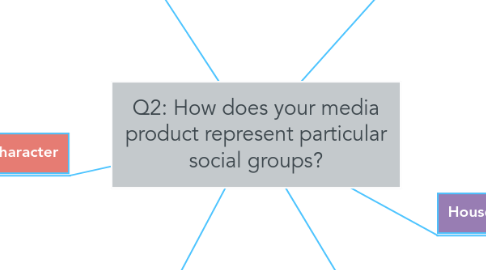Q2: How does your media product represent particular social groups?
da Alex Snowden


1. Forest Scenes
1.1. When the protagonist is stood over the other characters body, the protagonist is presented as anxious and scared, this can be shown by his body language as he is constantly moving and his facial expression shows he is scared
1.2. When the protagonist is stood at the top of the steps after seeing the secondary character walk up them he is shown as fearful. This can be shown by his facial expression as he looks panicked
2. Main Character
2.1. My product does not fit the typical representations of teenagers as the typical stereotypes which are associated with teenagers include them being; obnoxious, loud, and are often associated with gangs. In my media product my teenage 'protagonist' subverts these stereotypes as he is portrayed as a quiet, introverted, teenager
2.2. The main protagonist in the thriller is shown to be emotionally unstable, this can be shown through the protagonists body language and the use of editing. The fast cutaways to the person stood over the secondary characters body and the body language of the character shows the character as anxious and makes the audience feel apprehensive.
2.3. The main character in my product doesn't fit any of "Propp's Character Types" as he cannot be classified as a hero or a villain. In the opening to my thriller there are no significant indicators showing the main character as a hero or a villain as it does not show the protagonist killing the secondary character and it does not show the character trying to save him.
3. Mental Illness
3.1. When deciding on the plot for my thriller I decided that the storyline would revolve around the main protagonist and his mental illness and the stigma attached to it. The main protagonist in my thriller had 'borderline personality disorder (BPD)' (contrary to what I said in my pitch video), to prepare for my thriller I researched BPD and the symptoms that come along with it so that I could show this in my thriller.
3.1.1. Throughout the opening of my thriller the main protagonist hallucinates as he repeatedly sees the body of a dead person, this shows that the character has some emotional instability.
4. Teenagers
4.1. Clothing Through different aspects of the mise-en-scene we have shown that the people in my thriller, The characters in the thriller are wearing a shirt/ hoodie and jeans, this indicates that they are teenagers as it is informal and they are associated with young people.
4.2. Actors The actors which are used in my thriller also help make the representation of teenagers more realistic and relatable as they are teenagers themself
4.3. The fact that the actoes in my thriller are teenagers helps the audience relate to the characters in the thriller as they are of a similar age range and may have experienced something similar or know someone who relates to the characters situation.
5. House Scenes
5.1. The shots that are films in the house show the main character/ protagonist in distress by using fast cutaways and the use of heavy breathing. These shots help prove how the character is represented as emotional and unstable and shows the possible emotional turmoil of the character.
5.2. When the main character/ protagonist is looking out the window, he is further shown as unhinged, this can be shown by the apparent hallucinations of seeing the second character/ victim in the streets.
6. Males
6.1. All the characters that can be seen in my thriller opening are men, both of the characters seen in the opening of my thriller subvert the stereotype of men being strong, in control, powerful. Instead the two characters are shown as being victims and as being weak.
6.1.1. The main protagonist in my thriller subverts the typical representation of men as he is shown to be emotionally and mentally unstable which subverts the typical view of men being in control.
6.1.2. The second character/ the victim also subverts the typical representation of men as men are often portrayed as the perpertrators rather than the victims, who are usually portrayed as women.

